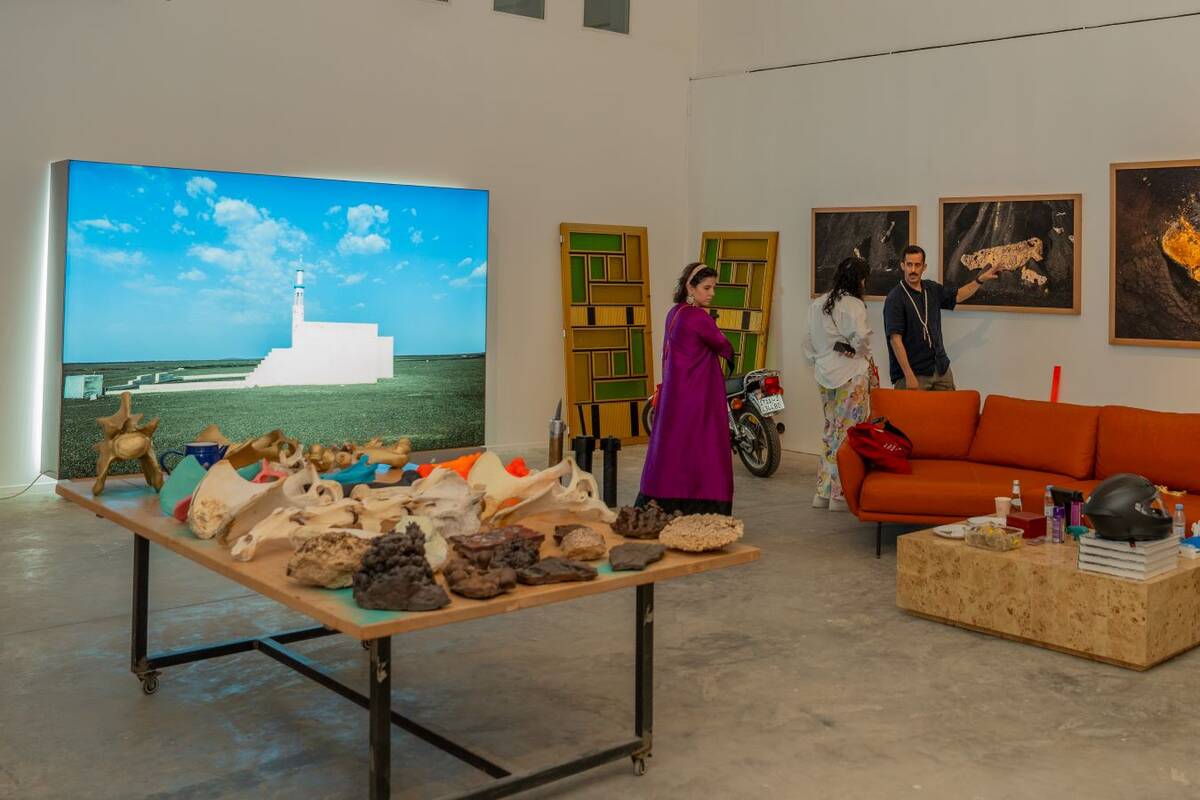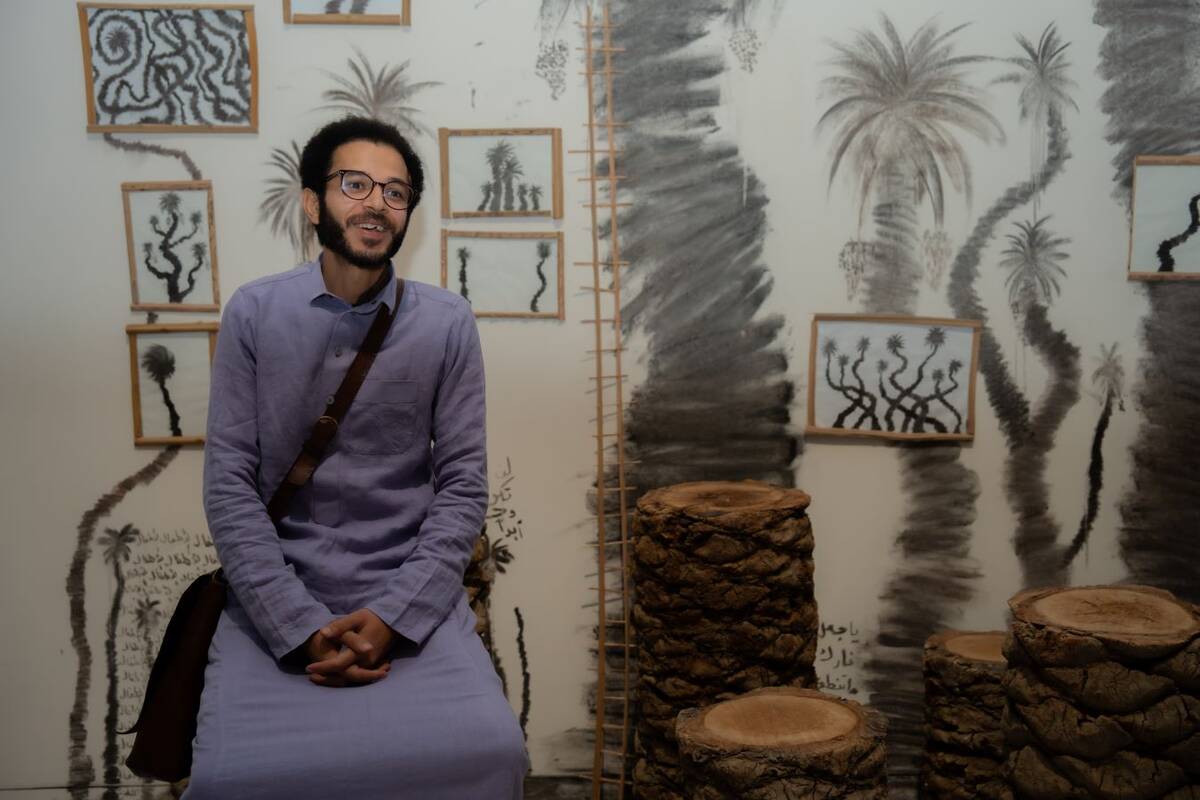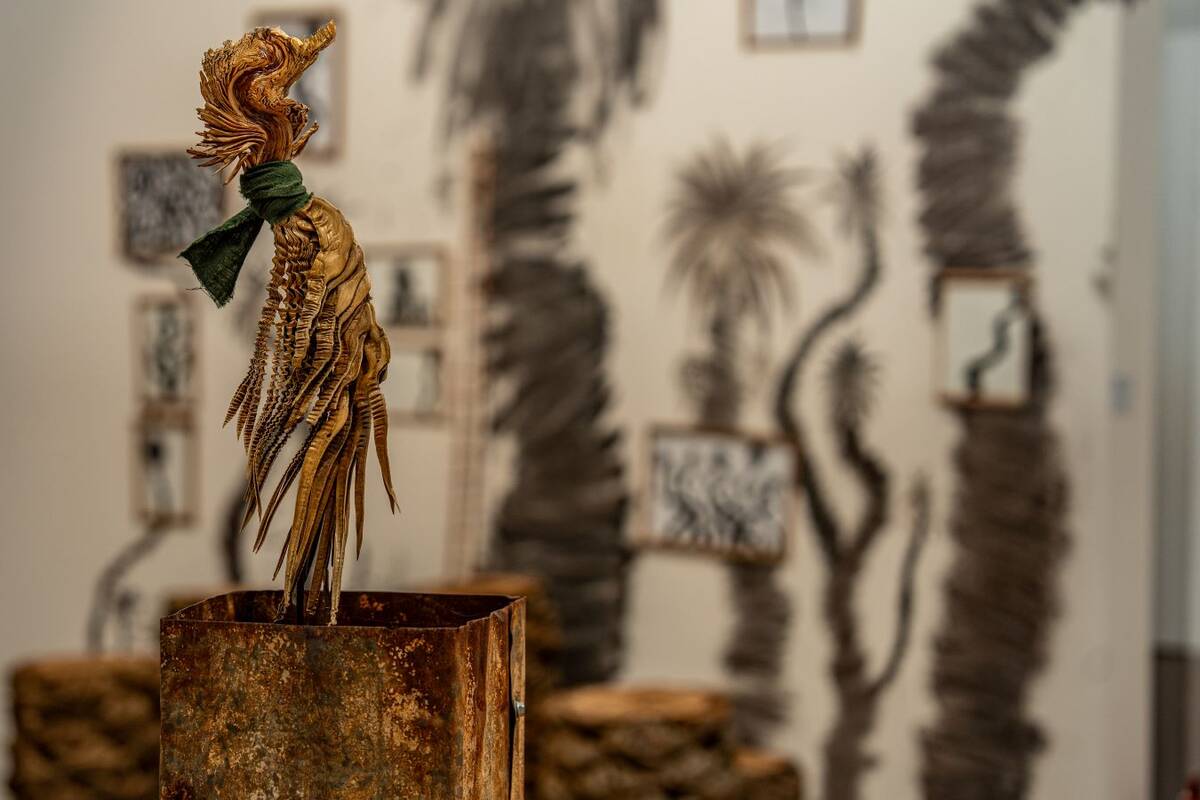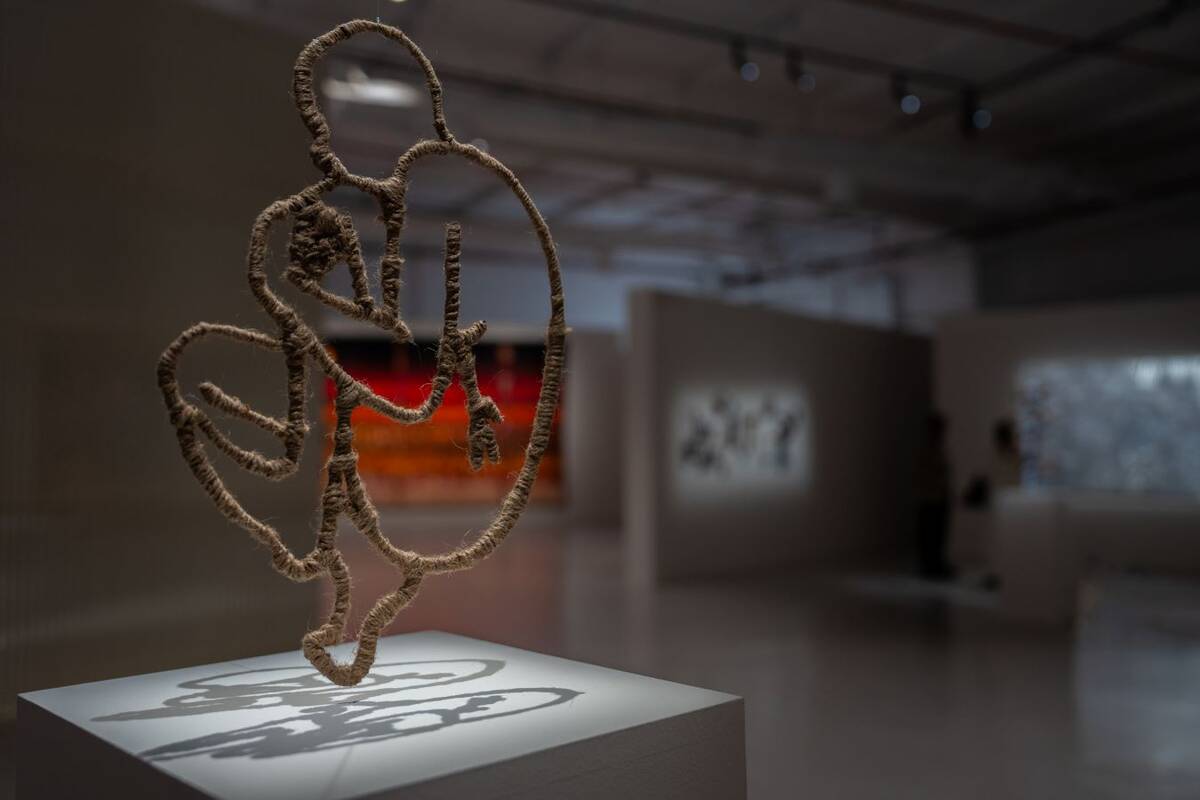ROTTERDAM: Faisal Saleh insists it was an “interesting coincidence” that led to him opening America’s first museum dedicated to Palestinian art less than a month before Nakba Day, which on May 15 will symbolically commemorate 70 years since the exodus of more than 700,000 Palestinian people from their homes.
FASTFACTS
Art and the Nakba
“Dear Lord” - Hazem Harb: Seven decades on from the outbreak of violence that drove more than 700,000 Palestinians from their homes — known in Arabic as the Nakba (the catastrophe) — the events of 1948 continue to color the work of artists of all mediums. The current generation of scattered artistic voices — of visual artists, filmmakers, musicians and poets — continue to struggle with the tragedy of the past, and the present it created. Gaza-born artist Hazem Harb’s “Tag” series drew from historic records of displaced families, while his “Dear Lord” group (pictured) cast Lord Balfour, co-author of the Balfour Declaration, as a faceless intruder on the Palestinian memory. “The Nakba is an integral part of most of my work, directly or indirectly,” said Harb. “The use of art to address and re-pose the most just cause in the history of contemporary humanity is the responsibility of an artist, and also a human responsibility – to recall the history of a people expelled and forcibly displaced from its land. Art is a means and a universal revelation.” Contemporary filmmakers have proved especially eloquent communicators. Among them Hind Shoufani, whose “Trip Along Exodus” charted seven decades of political history through the story of her father, a PLO leader. “Today a lot of artists deal with the continuous Nakba — the Nakba over and over again,” Shoufani told Arab News. “Because it wasn’t just 1948, it was also 1967, and since then land appropriation has been continuous, and the settlements have not stopped. “A lot of Palestinians have been sent to other Arab countries, from where they have also now been exiled again. Therefore, there is a continuous sense of the Nakba,” she continued. “It is not finished, we all feel it keenly in the stories of our families, and we all know people who have not been able to settle and find homes yet. So, the Nakba is an ongoing situation.” “Rachel Corrie mural” — Ayed Arafah: The first sight greeting visitors to Palestine Museum US is a huge mural honoring Rachel Corrie, an American pro-Palestinian activist killed while trying to block an Israeli armored bulldozer from destroying homes in 2003. Stretching five meters across the museum lobby, the specially commissioned piece is the work of artist Ayed Arafah, a resident of Dheisheh Refugee Camp. Corrie’s parents attended the museum’s opening ceremony. “Passing of Friends” — Mohammad Bushnaq: The oldest piece in the collection is a painting by Mohammad Bushnaq from 1985, which depicts a typical Middle Eastern scene: Two old friends sit lazily smoking shisha, while faded images of lost acquaintances hang symbolically in the background.
The founder of Palestine Museum US carefully downplays any political agenda, but there is only so much sidestepping that can be done; in the same way that seven decades of Palestinian lives have been shaped by the events of 1948, so has the art those lives reflect.
Hosted on the ground floor of an office building in Woodbridge, rural Connecticut, the gallery is a humble endeavor that has already made big news, as reportedly the only institute in the Americas to exclusively celebrate Palestinian culture.
“There really was a significant vacuum about Palestinian art and media in the United States,” Saleh, a 66-year-old Palestinian-American businessman who has called the US home for more than five decades, told Arab News.
“For years the Western media has portrayed Palestinians in a poor light and really focused on political divisions, strife in the Middle East, and on violence, with little information about the cultural and artistic aspects of Palestinians, or Palestinians as humans in general — the media dehumanizes and demonizes Palestinians.”
The result of just nine months’ work, Saleh has collected more than 100 pieces, representing a range of artists from the Palestinian diaspora in the US, Europe and Middle East to contemporary artists living in the West Bank, Gaza and inside pre-1948 Palestine. His efforts have included furtively funneling works out of Gaza through the diplomatic channels of “friendlier consulates.”
Among the artists featured prominently are celebrated abstract painter Samia Halaby — a figurehead of the regional art scene (represented by Beirut and Dubai’s Ayyam Gallery) and author of “Liberation Art of Palestine: Palestinian Painting and Sculpture in the Second Half of the 20th Century” — as well as works by Suzan Bushnaq, a Kuwaiti born to Palestinian parents, known for colorful expressionistic portraits of the female form.
Contrasting views from within Palestine — such as the evocative portraiture of Mohamed Saleh Khalil and the traditionally bucolic imagery of Maher Naji — shares wall-space with the work of US émigrés, including Manal Deeb’s abstract canvases and the pointed installation boxes of Rajie Cook. The museum also includes the harsh reality of Margaret Olin’s photography work documenting Bethlehem’s Dheisheh Refugee Camp.
“On one hand, we are not aiming to be political, but on the other we are not shying away from items which may be strong or have tough messages, because that is reality,” explained Saleh. “It is naïve to think anyone could have Palestinian art without [displaying] some aspect of Palestinian life, and the daily challenges people face — I’m not filtering through that.
“The mission of the museum really is to celebrate Palestinian artistic expression and excellence, and to provide the audience and visitors with a better idea of who the Palestinians are and what their life has been. We’re really hoping to change the discourse from the political arena to the artistic, humanistic arena.”
Still, sections of the museum move away from the strictly artistic, presenting an array of historic artifacts to illustrate the Palestinian narrative. These include an old passport and ID card — issued by the British administration of 1920 to 1948 — belonging to Saleh’s father, and dozens of archive photographs drawn from the US Library of Congress. These run from early European efforts to document “the Holy land” in the mid-19th century to some uncomfortable images of natives protesting against their foreign rulers in the first half of the last century.
“The photographs are very striking. In some you see British soldiers charging Palestinian demonstrators in Jaffa and Jerusalem — it kind of resembles what goes on now. For 100 years nothing has really changed,” said Saleh. “It really all goes to dispel the claim that there was no such thing as Palestine.”
Most moving of all may be a collection of art drawn by children in Gaza displayed in public for the first time. The work was created as part of a trauma-therapy program following the seven-week conflict of 2014.
“For weeks the children endured continuous bombing from the air, the ground and the sea, and they were traumatized in a way no other children around today have been,” said Saleh. “They’re shocking, when people see these pictures they say, ‘Children shouldn’t even know about these things.’ But it’s a huge thing in Gaza, you couldn’t be there and not notice what’s going on.”
Despite never working with Palestinian organizations in the US — or within the art world — before, Saleh was motivated to found the museum as a way to “give something back” to his homeland. Born near Ramallah, the eleventh child of formerly “well-to-do” parents displaced in 1948, Saleh recalled growing up as part of a refugee family struggling to survive on insufficient rations and meager manual work. After moving to the United States to finish high school in 1969, he later found financial security as a businessman and entrepreneur.
“The Nakba is obviously in everyone’s mind. The Nakba is what formed the lives of Palestinians everywhere, and every Palestinian has the same story,” added Saleh. “This is the story of hundreds of thousands of Palestinians, which is now millions of Palestinians, living throughout the region and across the world. This event has shadowed their life and influenced it – in one way it created insurmountable challenges, in another way, it provided the resilience and the determination to succeed.”






















